Memorial Day Garden 2014 (Page Two)
Sue said the garden is looking good so take some pictures... I did! She was quite correct, it was looking good










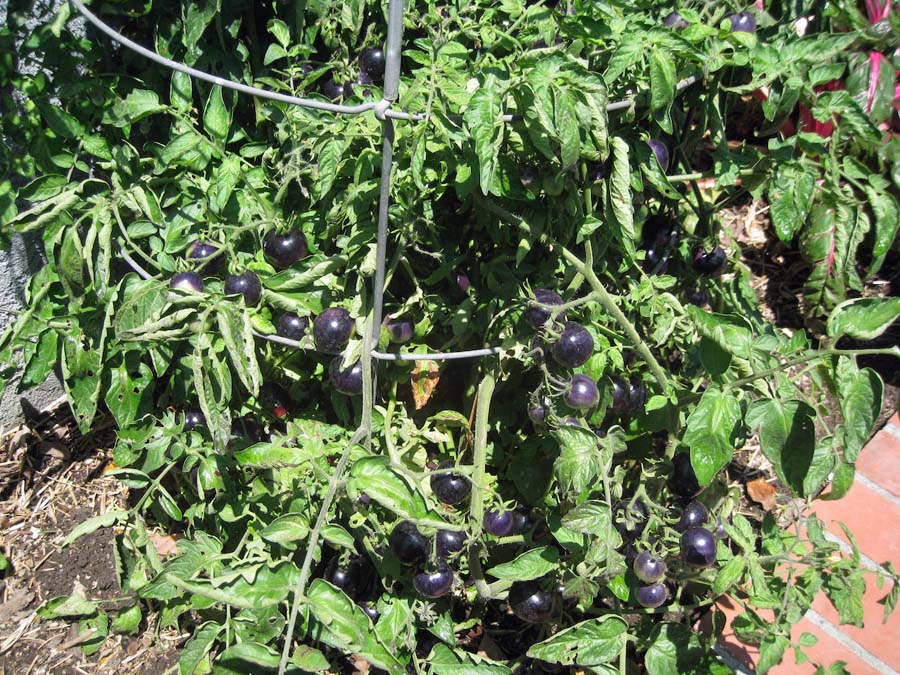










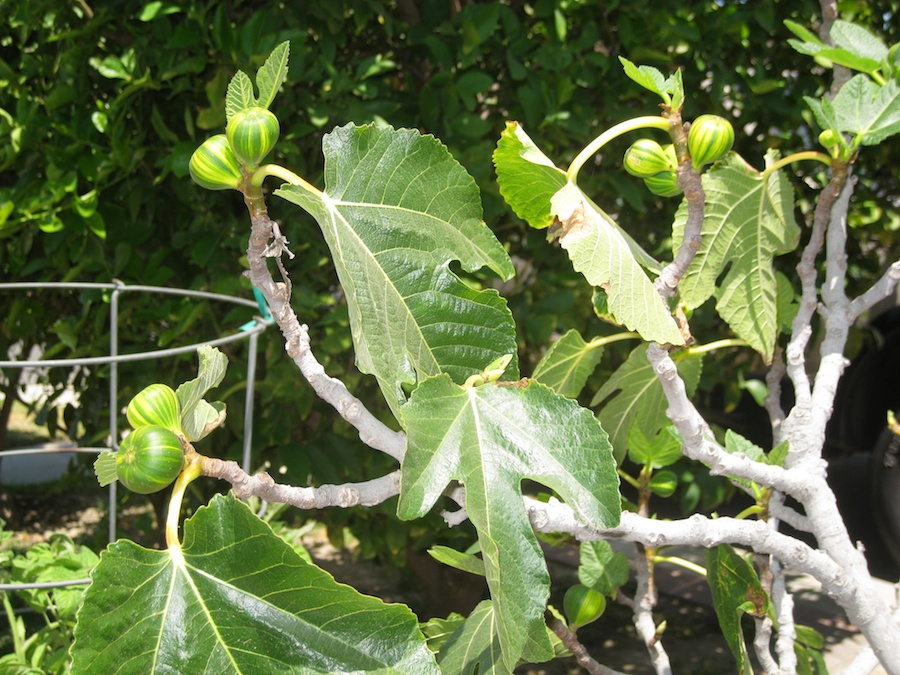












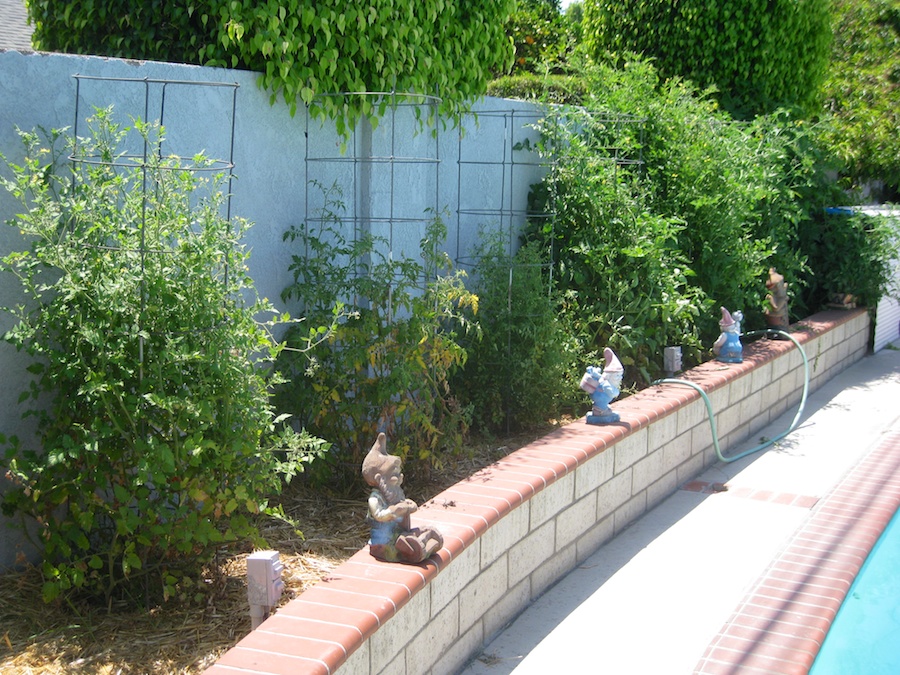












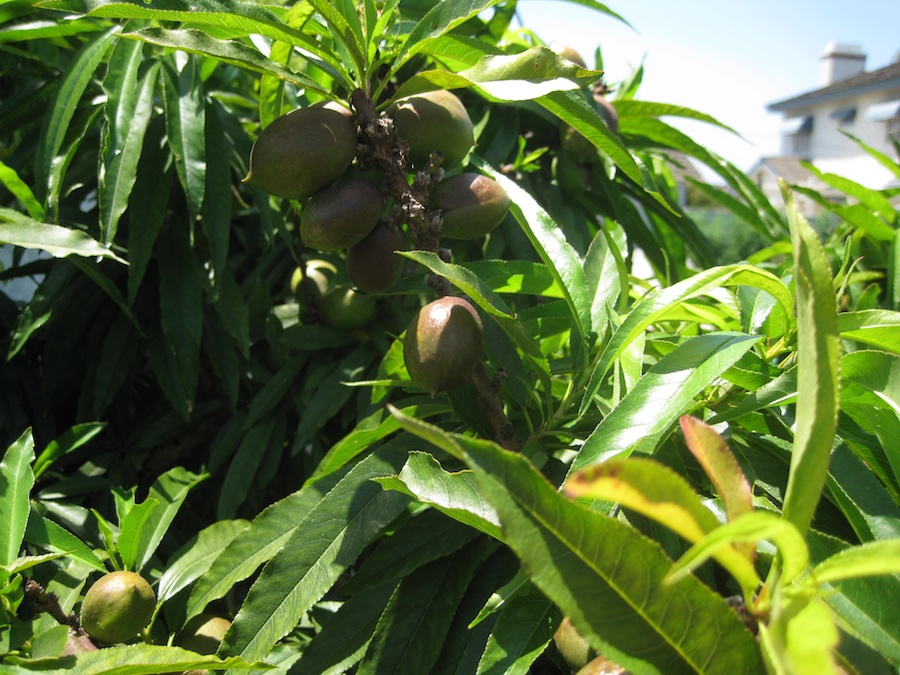
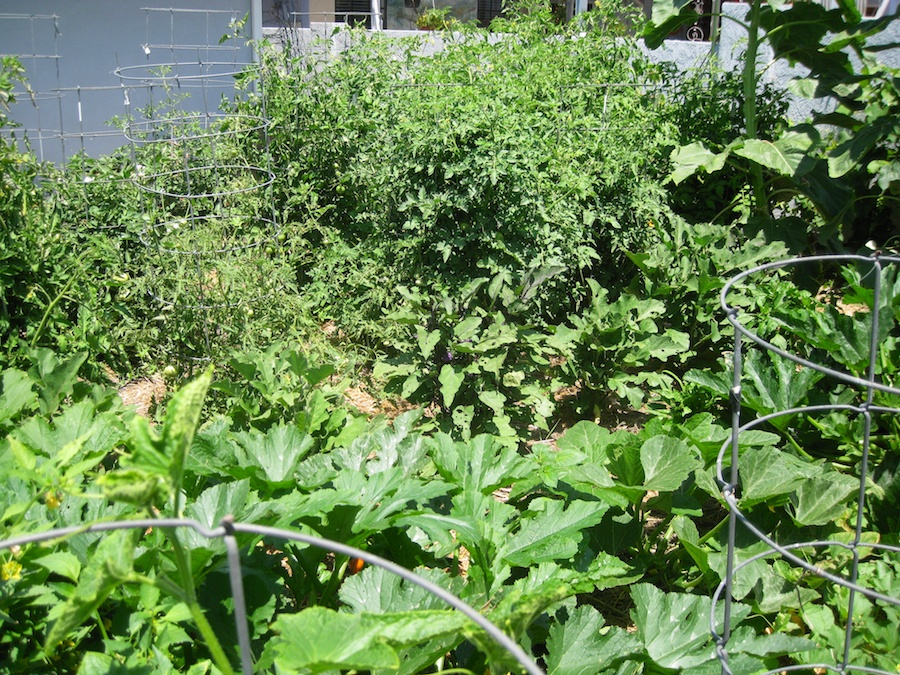


We have fruit trees outside the front door along the garage.
We have a lemon, tangerine, orange and grapefruit! 
The
Inside wall has strawberries, tomatillo, and four tomatoes
Fresh Salsa Hybrid, Nevers Azorean Red,
Black From Tula
and an Indigo Rose

The Indigo Rose is beautiful but when will it ripen?

The inside of the Indigo was quite different
Did You Know? - CORVALLIS, Ore. – The "Indigo Rose" tomato steps out this year as the first "really" purple variety to come from a program at Oregon State University that is seeking to breed tomatoes with high levels of antioxidants.
The new variety is a novelty type intended for home gardens and the fresh market, and it is now available in seed catalogs

Potatoes in front, carrots in the center, and string beans in the back

Eggplant and peppers

We stick onions in all over the place

Plenty of carrots


Kyoho grapes
are beginning to take shape
Did You Know? - Kyoho grapes (巨峰ぶどう Kyohō budō?, literally "giant mountain grapes") are a Concord-like cross (Vitis vinifera x Vitis labrusca) between Ishiharawase and Centennial grape varieties. Like Concord, Kyoho is a slip-skin variety, meaning that the skin is easily separated from the fruit. Kyoho grapes are blackish-purple, or almost black, with large seeds. While the seeds are bitter and the skin is not traditionally eaten, the flesh is juicy with high sugar content and mild acidity.
Kyoho grapes were first produced in 1937 in Shizuoka Prefecture, but were not so named until 1946. They are popular in Japan, China, Taiwan, and Korea for their size and very sweet flesh. They are traditionally served peeled as a dessert, and the juice is used in making chūhai cocktails. Areas of production include Nagano Prefecture, Yamanashi Prefecture, California's Central Valley, Changhua County in Taiwan, and Chile.

Plenty of oranges inside the tree

We have to eat three apples a day, each, to keep up with our tree

Looking good!

Thompson seedless grapes along the driveway
Did You Know? - The sultana is a "white" (pale green), oval seedless grape variety also called the sultanina, Thompson Seedless (United States), Lady de Coverly (England), and oval-fruited Kishmish (Turkey, Palestine). It is assumed to originate from the Asian part of the Ottoman Empire
In some countries, especially Commonwealth countries, it is also the name given to the raisin made from it or from larger seedless grapes; such sultana raisins are often called simply sultanas or sultanis.
These are typically larger than Zante currants (which are actually a kind of dried grape, not currants in the botanical sense), and the Thompson variety is smaller than many seeded raisins.

In another few weeks we will up to our keister in string beans

Variegated figs

These are delicious and Sue makes them magic

The kumquat tree seems always to be loaded with fruit
Did You Know? - When the kumquats are divided into multiple species, the name Fortunella margarita (or Citrus margarita) is used for this group. The oval kumquat is also called the Nagami kumquat.
The unusual feature of the Nagami cumquat is in the eating of the fruit. The fruit is eaten whole, skin and all. The inside is still quite sour, but the skin has the sweeter flavour, when eaten together it produces an unusual refreshing flavour.
Fruit ripens mid to late winter and always crops very heavily, making a spectacular display against the dark green foliage. The tree is smaller growing and dwarf in nature, making it ideal for pots and has even been used in bonsai.

The lime tree is always loaded with blossoms and small fruit but we believe people are helping themselves to most of the fruit since lime prices are high

In side south-side yard the tomatoes are going well

Spaghetti squash grows about an inch or so a day

We have a Rose, Hogheart Paste,
Supersteak,
Lemon Tree, Copia Striped, and a Brandy Boy

The blue berries are going wild!

Nummy nummy nummy

Another few weeks and we will be making tomato sauce

A tomato-based sauce containing tomato puree, diced tomatoes, and bell peppers (red, yellow, and green) with the seeds included. It is seasoned with fresh garlic, basil, oregano, paprika, cajun seasoning, crushed red pepper, parsley, olive oil, and possibly some additional seasonings.
Did You Know? - Tomatoes have a rich flavor, high liquid content, very soft flesh which breaks down easily, and the right composition to thicken into a sauce when they are cooked (without the need of thickeners such as roux). All of these qualities make them ideal for simple and appealing sauces. The simplest tomato sauces consist just of chopped tomato flesh cooked in a little olive oil and simmered until it loses its raw flavor, and seasoned with salt.
Optionally tomato skins may be scalded and peeled according to texture (especially thicker pelati paste varieties) and tomato seeds may be removed to avoid their bitterness.

Squash and tomatillos... We have been picking/eating squash for a month now

Yes... those are sunflower about ten feel tall!

Squash and string beans surrounded by
melons

Our baby tomatoes are along the back fence and they are beginning to produce

An easy way of slicing the little tomatoes

The string beans are reaching for the sky

Hey... Look what we can do!

The north wall is loaded with grapes.. Little hard to see now since they are green

Mr. Striped has yet to turn orange

Another few weeks

Ah ha... Found one hiding

We have to tie up the limbs as they are so loaded with fruit

Eggplant blossoms

We respect them!

Sue chopped up the blossoms this morning and put them in the squash...
They were beautiful

We will have cantaloupe in another six weeks or so


We looked for someone climbing up the sunflower to say hello to the Giant!

Looks like we are going to have several flowers

I am a happy flower

We have to stay after the grapes to assure the foliage doesn't cover the grapes
We are going to have a load of grapes this year

Nectarines are beginning to turn

Everything is green and growing
June 9th 2014
We had the day "off" so it was time to harvest and cook some of our goodies from the garden! Always fun to work together in the kitchen.


The apples were begging to be picked... Applesauce today!

The tree was loaded and we already picked it twice this last week!

Peel, quarter and cook with cinnamon and lemon...
45 minutes later mash and add sugar, butter, and spices
The
fresh apple sauce
made our home smells like a candy store


Inside our fence the carrots were going wild... Several gave up their lives for us


We are also picking small carrots this year.... So tender!

A little peeling... A little slicing... A little baking with olive oil and voila!

Look hard... They are Indigo Rose black tomatoes

Reach for the sky partner... Green beans are on the go
Did You Know? - Over 130 varieties of green bean are known.[6] Varieties specialized for use as green beans, selected for the succulence and flavor of their pods, are the ones usually grown in the home vegetable garden, and many varieties exist. Pod color can be green, purple, red, or streaked. Shapes range from thin "fillet" types to wide "romano" types and more common types in between.
The first "stringless" bean was bred in 1894 by Calvin Keeney, called the "father of the stringless bean", while working in Le Roy, New York.

We delivered a 100 lemons to neighbors
this last week... The tree has gone wild!
Did You Know? - Citrus × meyeri, the Meyer lemon, is a citrus fruit native to China thought to be a cross between a true lemon and either a mandarin or common orange.
It was introduced to the United States in 1908 as S.P.I. #23028 by the agricultural explorer Frank Nicholas Meyer, an employee of the United States Department of Agriculture who collected a sample of the plant on a trip to China.

Can't cook without fresh herbs

The the back yard Mr. Sunflower has achieved amazing proportions

He is looking over a six-foot wall into the neighbors yard with ease

The tomatoes are beginning to change color...
July and August will be busy tomato sauce preparation months!

A peek over the strawberries and the potatoes are going wild!

The sunflower is probably twelve feet tall
Did You Know?
The scientific name of sunflowers is Helianthus, Helia for sun and Anthus for flower.
Sunflowers are a great choice for planting to attract birds to your yard.
Sunflowers are one of the fastest growing plants. They can grow 8 to 12 feet tall in rich soil within six months.
Do you know what country grew the tallest sunflower? The Netherlands (25' 5.5" tall) grown in 1986 by M. Heijmf.
It require only 90 to 100 days from planting to maturity.
The former Soviet Union grows the most sunflowers. The sunflower is the national flower of Russia.
The sunflower is native to North America and was used by the Indians for food and oil. Some farmers use it to feed their livestock.
We use sunflower seeds to make oil, bird seed and for snacking. They have lots of calcium and 11 other important minerals. They do have 50% fat, BUT it is mostly polyunsaturated linoleic acid.
Wild sunflower is highly branched with small heads and small seeds, in contrast to the single-stem and large seed head of domesticated sunflower.
Sunflower heads consist of 1,000 to 2,000 individual flowers joined together by a receptacle base. The large petals around the edge of a sunflower head are individual ray flowers which do not develop into seed.
A well-known sunflower characteristic is that the flowering heads track the sun's movement, a phenomenon known as heliotropism.
The daily orientation of the flower to the sun is a direct result of differential growth of the stem. A plant-growth regulator, or auxin, accumulates on the shaded side of a plant when conditions of unequal light prevail. Because of this accumulation, the darker side grows faster than the sunlit side. Thus, the stem bends toward the sun.
Sunflower seeds are rich in oil, which they store as a source of energy and food. Sunflower seeds are crushed to give us oil. We can use sunflower oil for cooking.
Sunflower plants can be from 3 to 18 feet tall.
One sunflower can have up to 2000 seeds.
There are more than sixty different kinds of sunflowers in the U.S.
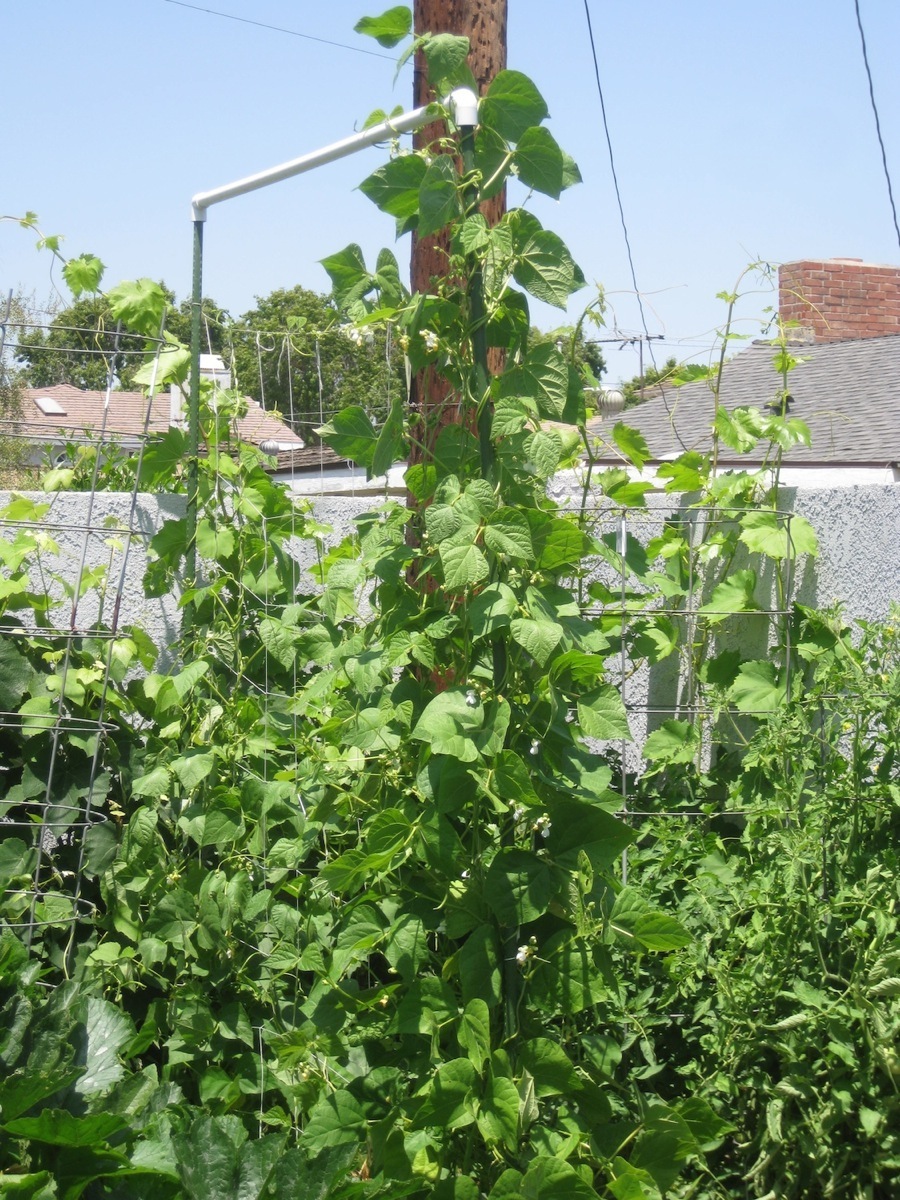
More greenbeans in the back yard....

August 5th 2014 - The Garden Is Gone
We made so much food from the garden we decided to stop short and get the redesign underway! Instead of a 21 x 28' garden we are going to have four gardens 21 x 4 with 3 foot walkways inbetween. Two content reasons: 1) Paul is getting old and 2) we grow way much more than we can use!

Out go the old plants... Time to rototil the ground!

The grapes are doing fine

The small tomatoes are all gone now

We trimmed the grapes to remove leaves and expose the grapes to the sun

We have a load of table grapes to devour